Table of contents
Shiitake or shii-take mushrooms ( Lentinula edodes) can be used in many different ways, either fresh or dried. Depending on the drying process, they are mostly still "raw" in this state. In German, these mushrooms are also known as Pasania mushrooms.
Use in the kitchen:
Raw or dried shiitake mushrooms are traditionally eaten with rice, sushi or vegetables. Shiitake mushrooms taste good fried, baked or steamed - but also raw. In Europe, shiitake mushrooms are used in soups, ragouts, risottos, as vegetable or pan dishes, as sauces or with pasta.
Preparing dried shiitake mushrooms: Dried shiitake mushrooms usually need to be soaked for about an hour before they can be used. You can find out how to process them further in the shiitake recipe. You can process the dried shiitake into powder and use their unique flavor as a spice in soups, sauces or stews. Some people also drink the shiitake powder as a tea.
It is well known that shiitake mushrooms have the taste quality umami. This fifth taste is also recognized by science. The naturally contained glutamate creates this taste on our tongue. 1
Recipe for tea with shiitake mushrooms (dried):
Dried shiitake mushrooms can also be prepared as a tea. To do this, soak a dried shiitake mushroom in water for about an hour. Then cut it up and add two more cups of water, let it simmer gently for about 10-20 minutes. Until about 1 cup of tea remains. The taste is very intense, so it is recommended to only drink half a cup at a time. Some cold or throat teas contain shiitake extract, as it is said to help with infections.
Vegan recipe for cauliflower with tofu and shiitake:
Ingredients (for approx. 2 servings): 25 g dried shiitake mushrooms, 200 g tofu, 2 tbsp soy sauce, 1 tsp sesame oil (roasted), 2 tbsp sesame seeds, 1 cauliflower (approx. 750 g), 2 bunches of spring onions, 2 tbsp oil for frying (e.g. rapeseed oil), salt, pepper and 50 ml vegetable stock or water.
Prepare dried shiitake: Soak the shiitake mushrooms in plenty of water for about 60 minutes. Then pour off the soaking water and rinse the mushrooms well and squeeze them dry. Cut off the stems of the shiitake and halve the caps, depending on their size.
Meanwhile, cut the tofu into small cubes and marinate in soy sauce, sesame oil and sesame seeds. Cut the onions into bite-sized pieces. Cut the cauliflower florets into 2 cm thick slices and fry on both sides in 1 tablespoon of oil for about 10 minutes over a medium heat. Keep the cauliflower warm. Heat the remaining oil in the same frying pan and fry the shiitake, tofu and onions in it. Season with salt and pepper and arrange on the cauliflower slices. Deglaze the pan with the stock, season to taste and pour over the cauliflower, tofu and shiitake and enjoy immediately.
Vegan recipes with dried shiitake can be found under the note: " Recipes that have the most of this ingredient ".
| Not only vegans or vegetarians should read this: Vegans often eat unhealthily. Avoidable nutritional errors. |
Shopping - where to buy dried shiitake mushrooms?
Dried shiitake mushrooms are available from supermarket chains such as Coop, Migros, Denner, Volg, Spar, Aldi, Lidl, Rewe, Edeka, Hofer etc., sometimes packaged in bags (labeled: dried shiitake or dried shiitake mushrooms) - usually not in organic quality. The powder made from shiitake mushrooms can be found almost exclusively on the Internet, as can dried shiitake mushrooms from organic production.
Fresh shiitake mushrooms are available in supermarkets or at weekly markets, sometimes in organic quality. There are two types on the market: Donko, also written Tongku or Tonggu, is thick-fleshed and firm, with a cap that is barely open. Koshin is somewhat thinner and has a cap that is wide open. 1 Do not buy shiitake mushrooms with a dried out or cracked stem. Wrinkles on the skin of the shiitake mushroom show that the shiitake is no longer completely fresh. Slime formation is a sign of a bad mushroom.
Drying shiitake mushrooms yourself:
Since mushrooms spoil very easily, it is advisable to dry them if you have a large amount of shiitake. To do this, clean the dry mushrooms with a brush. The scales on the cap are normal for shiitake mushrooms and are not a negative sign of quality. The now clean mushrooms are cut into equal-sized pieces.
If you want to dry shiitake mushrooms, the best way to do this is in a dehydrator or in a convection oven. We do not recommend drying shiitake mushrooms in the air, as it is difficult to achieve consistent drying and mold can quickly develop.
Depending on the thickness of the mushroom, set the temperature between 40 and 70 °C. It is important to have a constant temperature and a small opening for the moisture to escape. You can do this by clamping a wooden spoon. It is difficult to give an exact drying time. It takes between 2 and 8 hours for the mushrooms to dry, depending on the thickness and temperature. Remember to turn the mushrooms at least once.
In order not to destroy certain ingredients, we recommend drying at temperatures of around 40 °C and allowing for a longer drying time. This way, the shiitake mushrooms remain raw (raw food quality) and there are also far fewer Maillard reactions. The optimal degree of drying is achieved when the mushrooms contain less than 15% liquid. Measuring this is not so easy, so we rely on an audible cracking sound when breaking. After drying, the shiitake mushrooms are left to cool for around half an hour before being placed in a tightly sealed container. 2
Found in the wild:
In China and Japan, shiitake mushrooms grow wild directly on the trees in the forest. The mushrooms offered on the market come from farms in Asia, Europe and America. 1
Storage:
Dried shiitake mushrooms should be stored in a dry place, protected from light and hermetically sealed in a glass jar or resealable bag. It is important that the dried mushrooms absorb as little moisture as possible from the air. Fresh shiitake mushrooms only last 3-4 days in the refrigerator.
Ingredients - Shiitake nutritional values - Calories:
Dried shiitake mushrooms naturally contain a lot more calories than fresh mushrooms. The 296 kcal/100g come mainly from carbohydrates, the fiber content is 12%. The fat content is negligible, but the protein they contain makes up almost 10%. The vitamin content is remarkable. 20 g of dried shiitake mushrooms cover around 75% of the daily requirement of pantothenic acid (vitamin B5) (22 mg/100g). This example refers to the energy requirement of an average woman. In comparison, there are dried porcini mushrooms, where 20 g cover around 50% (15 mg/100g). Dried seeds or herbs have much less of this. 3
The biotin (vitamin B7) content per 100 g of shiitake is 75 µg, which is slightly lower than in dried porcini mushrooms (94 µg) or moringa powder (93 µg).Dry yeast has significantly more biotin at 200 µg. Other vitamins such as riboflavin, niacin, folic acid and vitamin D are covered between 90 and almost 80% in 100 g of shiitake. Pasania mushrooms, i.e. shiitake, also contain elements such as selenium, potassium and zinc. 3
The complete ingredients of dried shiitake mushrooms, the coverage of the daily requirement and comparison values with other ingredients can be found in our nutrient tables. In the article Nutrients explained you will get a detailed insight into the topic.
Health aspects - effects:
The B vitamins contained are important for a healthy metabolism and for good nerves. The positive effect of mushrooms on digestion is well known. In addition, the shiitake, known as a medicinal mushroom, is said to promote the important probiotic bacteria in the intestine and thus act against harmful bacteria. 4
The vitamin D in shiitake mushrooms can help people who don't get much sun to increase their vitamin D levels. The vitamin D content can vary greatly due to the different cultivation methods. It helps to place the mushrooms in sunlight after harvesting; this can increase the vitamin D content in the mushrooms somewhat.
Dangers - Intolerances - Side effects:
Some people react with allergic skin rashes (dermatitis) when eating shiitake mushrooms. At first it was thought that this only happened when the mushroom was raw, but the lentinan (polysaccharide) it contains is heat-resistant. Therefore, shiitake mushrooms can also cause skin reactions when cooked. 5
This rare shiitake dermatitis or flagellant dermatitis causes striped, whiplash-like redness on the arms, legs and neck. The rash is very itchy and can last for up to 8 weeks. These reactions can also occur with mere skin contact. Sensitive people also react with respiratory problems when inhaling the fungal spores. Reactions to shiitake extracts (tablets, capsules) have not yet been studied. A possible allergy should be clarified before taking the product. Caution is advised with food supplements (not medicines!). 5
Use as a medicinal plant:
The king of medicinal mushrooms , Lentinula edodes, is said to have very versatile effects. The polysaccharides contained in shiitake mushrooms (the beta-glucan lentinan) activate the immune system when consumed regularly. This enables the body to fight fungi, parasites, bacteria and viruses better. Its effectiveness is so great that lentinan is also used in combination therapies for AIDS patients. 6,7
Studies on the healing effects of shiitake ingredients on cancer come mainly from Japan. The polysaccharide lentinan can locate and destroy cancer cells. Shiitake juice is also used for this purpose in the form of tablets or drinking ampoules. This results in a lower number of metastases and radiation and antibody therapies are said to be more effective. In Japan, lentinan is injected; the absorption from fresh mushrooms would be far too low for these forms of therapy. 8
Further clinical studies on advanced stage stomach cancer show that life expectancy can be extended with treatment with lentinan. 9 Similar results have also been achieved in breast cancer, prostate cancer and colon cancer patients. Active ingredients such as the cholesterol-lowering eritadenine or the alpha-glucan AHCC, which are also contained in the shiitake mushroom, have anti-tumor properties. AHCC (Active Hexose Correlated Compound), a mixture of polysaccharides, amino acids, fats and minerals, has proven particularly effective in cervical cancer. It increases the power of the body's own killer cells and is said to have a healing effect. 10,11 Shiitake mushrooms combined with foods rich in folate are suggested as a way to prevent cervical cancer.
However, the shiitake mushroom, like other medicinal mushrooms, has not yet been used in cancer treatment in Europe. It is still unclear whether the mushroom as such has the same effect as its individual ingredients, which are used in studies. 12
Folk medicine - natural medicine:
The shiitake mushroom is very important in Asian folk medicine, especially in traditional Chinese medicine (TCM). In Japan and China, people eat yakuzen (dishes based on TCM) for inflammation, tumors, stomach problems, headaches, dizziness, liver cirrhosis and arteriosclerosis. For these complaints, patients are advised to regularly eat dishes containing shiitake mushrooms. 1
Occurrence - Origin:
Shiitake mushrooms have been known in Japan and China for thousands of years as food and in medicine. Shiitake (dried) is also often found there. Today, shiitake mushrooms ( Lentinula edodes) are cultivated not only in Asia, but increasingly also in Europe and America.
Cultivation - Harvest:
Mushrooms cannot usually produce carbohydrates themselves and therefore do not contain chlorophyll. They take the carbohydrates they need for growth from other dead or living plants. This is why shiitake mushrooms grow in nature on various deciduous trees, ideally with hard wood (beech, oak, sweet chestnut, maple or walnut). For the traditional cultivation of shiitake mushrooms, Pasania trees (false chestnut) are felled during the growth phase, when the nutrients under the bark taste sweet. The spores find the ideal food source there.
Shiitake or Pasania mushrooms are cultivated mainly in greenhouses on substrates such as sawdust and rice bran, at 20 °C and a humidity of 80%.
Growing in the house and garden:
If you want to grow shiitake mushrooms yourself, you need shiitake mushroom cultures. You can find these in some garden shops or online. The pressed substrate (hardwood chips) is inoculated with the shiitake mushroom spawn. The culture needs a sun-protected, moist place either in the house or in the garden. In the garden, please note that the mushrooms are inaccessible to snails. Shiitake mushrooms need clean, cold tap water, ideally with a shower or shower head. Stagnant water or rainwater is unsuitable, as shiitake mushrooms are very sensitive to foreign bacteria and fungi. The ripe, medium-sized shiitake are harvested with a sharp knife as deep as possible on the substrate. You can harvest up to 500 g of shiitake mushrooms 2-3 times per bale of substrate. 13 If you only buy the mushroom spawn (grain spawn), you can also inoculate fresh logs yourself using inoculation dowels. Fresh mushrooms can be harvested from the cut logs several times a year. 14
General information:
Shiitake mushrooms ( Lentinula edodes or Lentinus edodes) belong to the Marasmiaceae family. Some also classify them as members of the Tricholomataceae family.
According to Wikipedia, "take" means mushroom and "shii" means Pasania tree, i.e. the mushroom that grows on the Pasania tree. That's why it is also known in German as Pasania mushroom.
In English, shiitake mushrooms are known as shiitake or shiitake mushroom.
Literature - Sources:
Bibliography - 14 Sources (Link to the evidence)
| 1. | Wikipedia Shiitake. |
| 2. | Richtig-dörren.de Getrocknete Pilze. |
| 3. | USDA United States Department of Agriculture. |
| 4. | Zentrum-der-Gesundheit.de Der Shiitake-Pilz und seine Heilwirkungen. |
| 5. | Bundesinstitut für Risikobewertung. Gesundheitliches Risiko von Shiitake-Pilzen. 2004. |
| 6. | Dai X et al. Consuming Lentinula edodes (Shiitake) Mushrooms Daily Improves Human Immunity: A Randomized Dietary Intervention in Healthy Young Adults. J Am Coll Nutr. 2015. |
| 7. | Avtonomova AV et al. Antiviral properties of basidiomycetes metabolites. Antibiot Khimioter. 2014. |
| 8. | Wasser SP. Medicinal mushrooms as a source of antitumor and immunomodulating polysaccharides. Appl Microbiol Biotechnol. 2002. |
| 9. | Kenji I, Takae K, Takafumi A. The Use of Lentinan for Treating Gastric Cancer. US National Library of Medicine National Institutes of Health. PubMed. 2013 Jun;13(5). doi: 102184/1871520611313050002. |
| 10. | Ravensthorpe M. Shiitake mushrooms can help prevent cervical cancer, study finds. Natural News. 2014. |
| 11. | Smith J. et al. Abstract B79: Evaluation of active hexose correlated compound (AHCC) for the prevention or delay of tumor "growing" in human cervical cancer xenograft model. Cancer Prevention Research. 2011. |
| 12. | Deutsches Krebsforschungszentrum. Archiv. Shiitake: Harmloser "Heilpilz"? - Was Krebspatienten über den asiatischen Pilz wissen sollten. 2016. |
| 13. | Alternativ-gesund-leben.de Wie kann man Shiitake-Pilze selber züchten und anbauen? |
| 14. | Shii-take.de. |

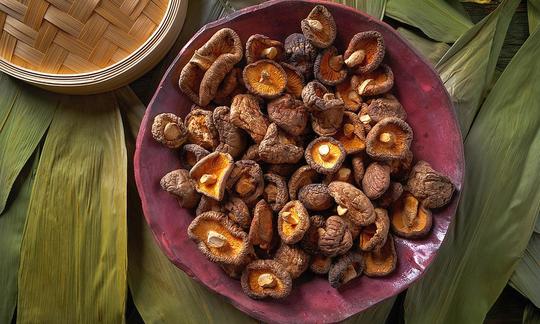

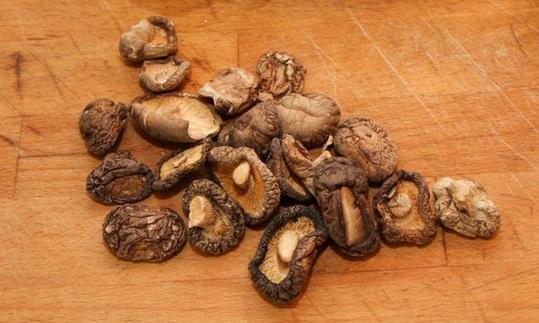

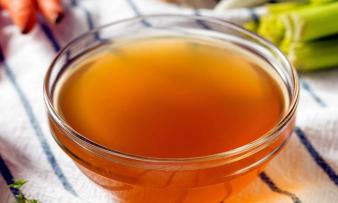

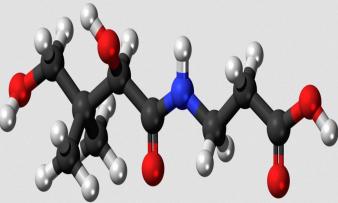
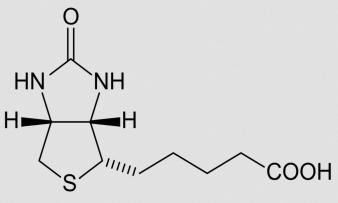


Comments